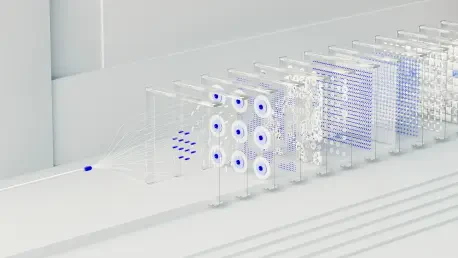The technology sector is witnessing a significant transformation as Hewlett Packard Enterprise (HPE) solidifies a strategic move to acquire Juniper Networks for $14 billion. This acquisition is pivotal within AI and networking technology landscapes, marking a shift in competitive dynamics and setting a new benchmark for industry mergers. The implications for enterprise customers and market competition highlight the importance of this development.
Strategic Context: Navigating the AI-Driven Networking Era
This analysis examines HPE’s ambitions to enhance its network portfolio, driven by the growing demand for AI-enabled solutions. By integrating Juniper Networks into its operations, HPE intends to double its efforts in networking, leveraging Juniper’s pioneering AI initiatives. The move aligns with HPE’s strategy to foster innovation in SD-WAN, cloud, and AI services, aiming to establish itself as a leader in the AI market. This merger reflects the industry’s shifting focus toward AI-driven transformation and its potential to reshape network infrastructures.
Market Projections and Regulatory Landscape
A Journey Through Regulatory Scrutiny
The path to completion was fraught with regulatory challenges, particularly from the U.S. Department of Justice (DOJ) and the UK’s Competition and Markets Authority (CMA). Initially, the DOJ raised antitrust concerns that could have derailed the deal, due to worries about reduced competition within the wireless market. HPE navigated these challenges by agreeing to divest key assets and license critical technologies. These actions reflected the intricate balance required to address regulatory concerns while pursuing strategic growth in a highly competitive market.
Aligning Product Offerings and Addressing Customer Concerns
The merger of HPE and Juniper’s offerings introduced complexities linked to potential overlaps, particularly when aligning Juniper’s solutions with those of HPE’s subsidiary, Aruba Networks. The potential disruption to product lines and distribution channels raised customer concerns about long-term service continuity. However, by focusing on seamless integration and clear communication, HPE aims to mitigate disruptions and ensure that customers experience enhanced, innovative networking solutions post-merger.
Geopolitical and Technological Dynamics
The deal received a mixed regional response, with European approval preceding endorsements from U.S. and UK authorities. This divergence showcased varying regulatory environments and their influence on global mergers. Furthermore, technological innovations—especially those centered on AI, like Juniper’s Mist AI—are set to redefine networking capabilities, positioning HPE at the forefront of technological advancements. This acquisition cements HPE’s focus on amplifying AI and networking synergies, fostering a robust competitive edge.
Shaping the Future of AI Networking
As AI’s role in networking continues escalating, the merger between HPE and Juniper is expected to serve as a catalyst for industry innovation. Future trends indicate increased demand for AI-driven network management, reshaping infrastructure requirements and customer expectations. These shifts underscore the importance of adapting competition strategies in a dynamically evolving landscape. Regulatory changes further influence market dynamics, potentially leading to new competition paradigms and industry benchmarks.
Strategic Insights and Implications
The conclusion of the HPE-Juniper acquisition provides several strategic insights. It highlights the critical role of regulatory compliance and the importance of transparent customer engagement. For industry stakeholders, appreciating these trends will be crucial for developing adaptive strategies that maximize competitive advantages. The integration approach adopted by HPE and Juniper could potentially set a precedent for future mergers, strengthening innovation while maintaining a customer-centric focus.
Reflecting on the merger’s journey reveals that it represented more than a corporate acquisition—it signaled a technological transformation within AI networking. Understanding its broader implications emphasizes the continued importance of strategic alliances that advance innovation. As the industry moves forward, sustaining competitive advantage will require sector stakeholders to adapt and evolve alongside emerging technological and market trends, driving sustained growth and progress.









